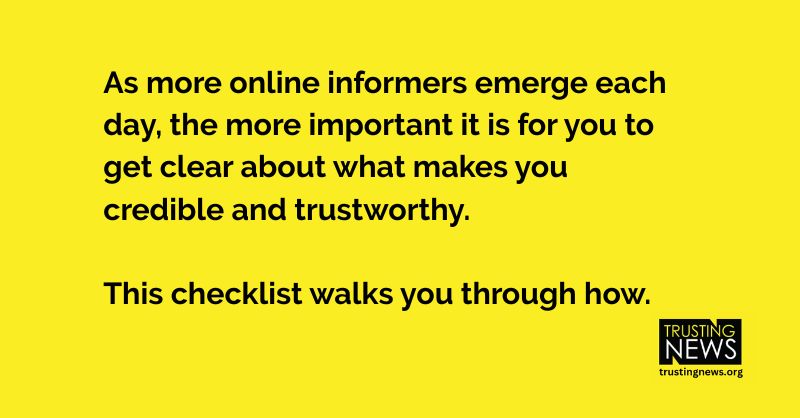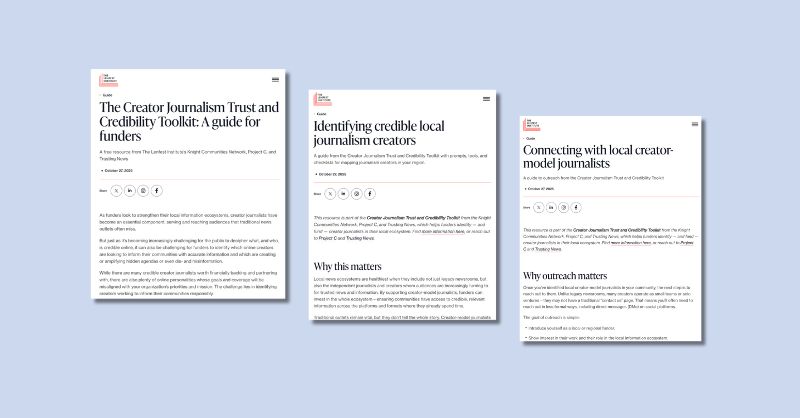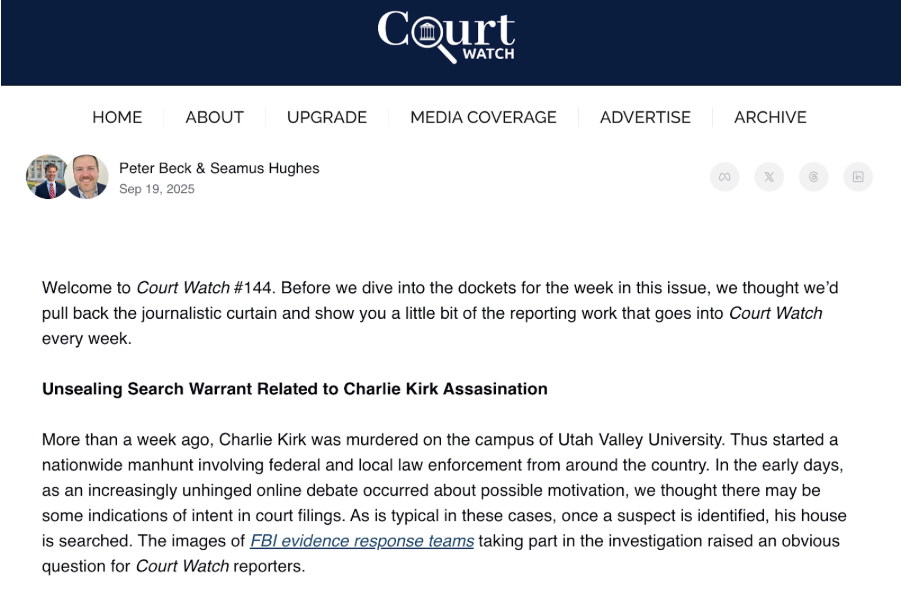
Most people don’t know what you’re about — here’s how the Tulsa Flyer changed that
Use a handout to introduce yourself to the community
Even if you’ve worked as a journalist in your community or on your beat for a long time, I bet …
- There are lots of people in your area who DON’T know you and don’t understand the goals behind your coverage. (According to Pew, only 21% of people have ever spoken with a local journalist.)
- Even for those who may be familiar with you, I bet a lot of them would welcome better understanding your mission and goals, and how you approach your work.
One simple way you can accomplish both of these is by creating a handout to introduce you and your reporting to your community.
Just think about all the people you or your newsroom team interacts with each week — whether that’s during interviews, at community events, or even just chatting in line at a coffee shop. What if after each of those interactions, the person walked away with something tangible that invited them to get to know you as a journalist better? Imagine over time how this might help shift your community’s sense of trust in you.
Example: How the Tulsa Flyer uses bilingual handouts
The Tulsa Flyer is a new nonprofit news organization that just launched in Oklahoma. For months leading up to their launch, the team has been present in the community, tabling at events and connecting with community members.
A few months ago, Anna Colletto, the Flyer’s education reporter, wrote in a LinkedIn post that she “noticed while talking with busy parents and guardians at crowded, hot events that introducing a new, not-yet-named newsroom can get a bit… complicated.”
To help, Anna created a handout to explain the goals and mission behind her reporting while also putting a call out to connect with parents and guardians of school-aged kids. Anna said the handouts were a hit. She wrote: “It’s quickly anchored our conversations and increased our parent survey responses tremendously.”

A few things that are really great about this handout:
- In just two quick sentences, you get a clear idea about the mission and goals behind Anna’s education coverage.
- It has clear contact information for how to get in touch, share input and find journalists from the newsroom in person. It also includes a photo, which helps pull on the human side of work.
- It’s double-sided, in both Spanish and English, ensuring it will reach a wider audience.
- It was quick to create. Anna said she was able to get these printed within a day of having the idea.
This idea of creating a handout has expanded across the newsroom, Anna said, with now both the eastside reporter Angelica Perez who covers the Latino community, and the cost-of-living reporter Libby Hobbs carrying similar handouts with them as well.
How to replicate this work
We can envision these handouts being helpful for lots of different kinds of journalists.
- If you work at a startup (like the example above), you just moved newsrooms or even beats, this can be a good way to reacquaint yourself with your community.
- If you’re an independent freelance journalist, this could be helpful to establish your name and credibility, and even build trust with sources.
- If you’re working on a national team, you could create digital cards to invite people to get to know your reporting or more about your beat as a whole.
- If you’re working to cover communities your organization has historically not covered well, you could create a similar handout sharing your organization’s goals.
Things you might include in your handout:
- A statement that says you value your community’s trust and want to know how you could better serve your community.
- A photo and contact information.
- An invitation for people to interact with you. (You could include a question or prompt and link to a place to respond, such as: “What do you wish the community knew more about?” or “What problems do you wish our community were addressing?”)
- A mission statement, with a link or QR code that points to other About Us information.
- An ethics statement, with a link that points to your organization’s whole policy.
- A note about how you strive to be fair or what values drive your work.
- A link to a page with previous coverage that gives a sense of your work. (You can even do this on a Google Doc with a bit.ly link if your website doesn’t make it easy.)
- Ways to follow and support your work.
Remember: Most people don’t know you. They don’t automatically know you have your community’s best interest in mind. They don’t assume you’re making decisions based on a consistent, thoughtful ethical framework. The more you can counter potential misassumptions by getting on the record about your process and showing you’re trying to do things differently, the better chance you’ll have at building trust and creating real impact.
Could you use help? Here are two resources to get you started.
- Here’s a guide for how to craft your own reporter mission statement.
- See how an FAQ format can make it easy for people to get to know your work.
At Trusting News, we learn how people decide what news to trust and turn that knowledge into actionable strategies for journalists. We train and empower journalists to take responsibility for demonstrating credibility and actively earning trust through transparency and engagement. Learn more about our work, vision and team. Subscribe to our Trust Tips newsletter. Follow us on Twitter, BlueSky and LinkedIn.

Project manager Mollie Muchna (she/her) has spent the last 10 years working in audience and engagement journalism in local newsrooms across the Southwest. She lives in Tucson, Arizona, where she is also an adjunct professor at the University of Arizona’s School of Journalism. She can be reached at mollie@trustingnews.org and on Twitter @molliemuchna.



